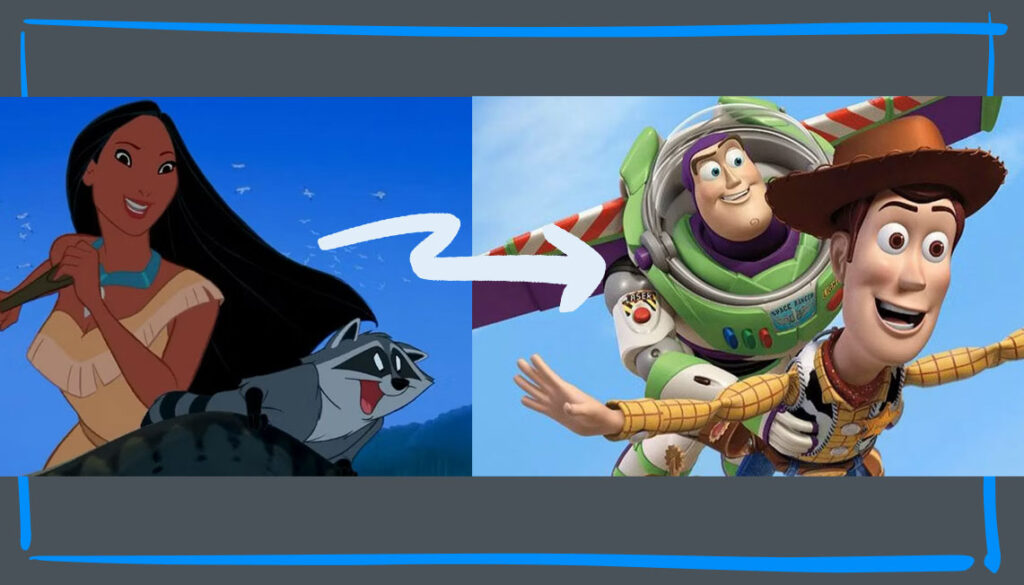Remember the last time you watched a 2D animated movie? If your mind wanders back to Disney classics, you’re not alone. The last big Disney 2D animated film was “The Princess & The Frog,” released 14 years ago. Since then, the animation landscape has been dominated by 3D and CGI technologies. But why did this shift happen? And what does it mean for creative professionals today?
The Shift to CGI: A Necessity or a Choice?
The transition from 2D to 3D animation wasn’t just a technological evolution; it was a business decision. CGI movies are generally cheaper and faster to produce, allowing studios to invest more in storytelling. For instance, when “Toy Story” was released, it outperformed 2D films like “Pocahontas” and “A Goofy Movie,” which were released the same year. ScreenRant points out that Disney’s last 2D animated film was “Winnie the Pooh” in 2011, and since then, the focus has been on 3D animation, which has allowed for hyper-realistic details.
The Human Element: From Cels to Computers
Disney has always been about its people. I once had dinner with a former Disney art director who was present when the company decided to shift from hand-drawn to digital animation. He shared that Disney trained its traditional animators to work on computers to ensure job security. This sentiment was echoed in an article by The Guardian, which mentioned that Disney Animation’s chief creative officer, John Lasseter, re-hired many animators who had been laid off due to the emergence of CGI back in the 1990s.
The Future: A Blend of Old and New
While the shift to CGI was largely driven by cost-efficiency, there’s good news for 2D animation enthusiasts. Rumors suggest that Disney is training a new generation of 2D animators for future projects. ScreenRant even mentions that Disney is “training up a new generation” of 2D animators and has plans for features and TV projects that use hand-drawn animation.
What Does This Mean for You?
If you’re in a creative field, it’s crucial to adapt to technological changes. Just like Disney’s animators had to transition from hand-drawn to digital, you might need to learn new skills like genAI to stay relevant. But remember, technology is a tool, not a replacement for creativity. So, while it’s essential to keep up with the times, never lose sight of the art that makes your work unique.
The world of animation is ever-evolving, and while 3D and CGI have their merits, the charm of 2D animation is classic. As we look forward to a future that likely blends both, it’s a reminder that while technology changes, the essence of storytelling remains the same.
So, are you ready to adapt, or will you be left behind in the name of “efficiency”? It’s time to think about where your career will be in a few years and start aiming for that.



